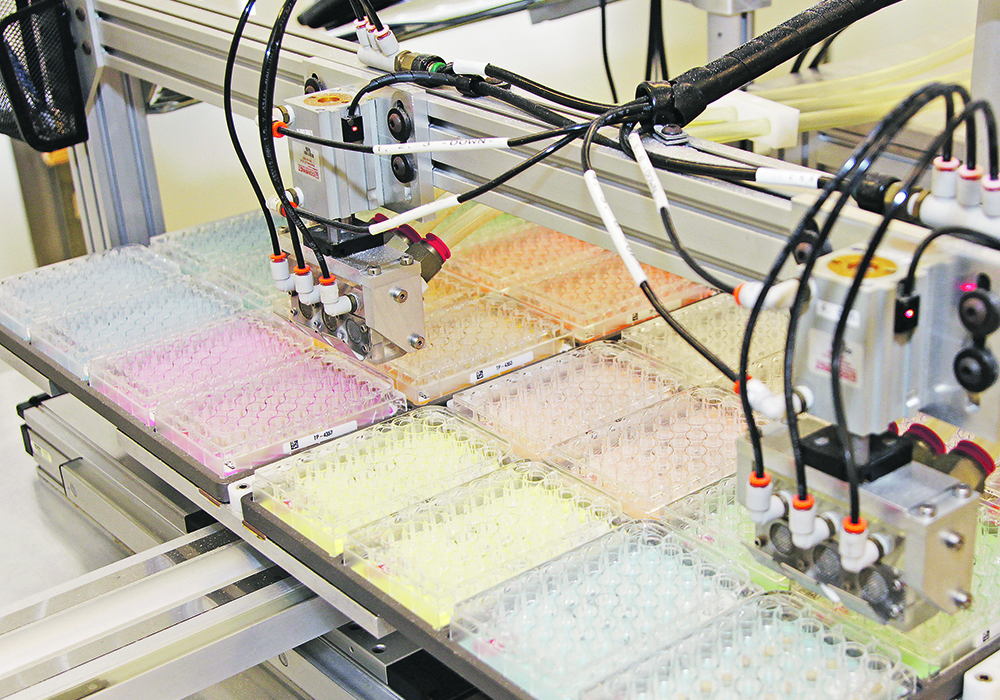The government is under pressure to modernize its plant breeding regulations to better define ‘new’ and ‘improved’
What’s new and what is an improvement?
If a cup holder is added to a lawn chair, that’s likely an improvement. But if the lawn chair can be folded up into a purse, maybe that’s new.
When it comes to crop innovation and development in Canada, the new vs. improvement question has become a top-of-mind issue for investors, researchers and crop science companies.
The Canadian Food Inspection Agency and Health Canada currently follow a policy called Plants with Novel Traits (PNT).
Read Also

Organic farmers urged to make better use of trade deals
Organic growers should be singing CUSMA’s praises, according to the Canadian Chamber of Commerce.
What that means, is the CFIA and possibly Health Canada must assess the safety of any “novel plant, feed or food before it can be used in Canada.”
The key word in that sentence is “novel”.
“Canada needs to have a discussion about what novelty means (and) what is new when it comes to plant breeding,” said Ian Affleck, vice-president of plant biotechnology with CropLife Canada.
CropLife and others have been urging the government to modernize its policies around PNT to reflect changes in the world of plant science.
More breeders, public and private, are using techniques like gene editing to design crops. In gene editing, genes are deleted from the genome of a plant or can be added from the same family of plants to achieve a desired outcome — possibly a canola variety that’s more resistant to flea beetles.
That leads back to the question of novelty.
Is that flea-beetle-resistant canola a novel trait or is it an improvement upon existing traits?
If it was accomplished with a transgene, it definitely would be novel. It would trigger a comprehensive safety assessment, requiring years of experiments and tens of millions of dollars in costs for the company behind the technology.
If it was done with gene editing, it could be novel.
Or maybe not.
“If you did that because you made the canola hairier, by selecting for more trichomes on your canola, you might not trigger novelty. But the problem is you don’t really know,” said Chris Anderson, chief technology officer with Protein Industries Canada, a group trying to position Canada as a global source of high quality plant protein.
A CFIA website says some products developed with gene editing “may not meet the regulatory definition of novel.”
But others may meet the definition.
That language is a problem because investors like certainty, not ambiguity.
“The difficulty is it’s somewhat subjective…. What is the amount of novelty that triggers regulation?” said Anderson, who worked for 20 years in private industry, including five years leading the canola technology strategy for Monsanto and Bayer. “It becomes, virtually, a case-by-case scenario.”
The uncertainty is becoming a bigger challenge for crop science innovators in Canada because other countries now have clear rules around gene editing.
In mid-May, the United States Department of Agriculture unveiled changes to its plant biotech regulations. Under the new rules, gene-edited crops will be treated similarly to conventional plant breeding and will be largely exempt from regulation.
“If you’re upping disease resistance in a plant from 10 percent to 40 percent using the genes that are in the plant with gene editing, you could have gotten there with conventional breeding,” Affleck said. “(So) you’ll receive the same level of oversight.”
CropLife wants the Canadian government to adopt a similar policy to the U.S. If that doesn’t happen, investors and innovators will move their money to countries that have a clearer policy on plant biotechnology.
“When you look at countries like Argentina, Japan, Australia and the U.S., all have made moves to clarify the regulatory approaches,” Affleck said. “Canada, it’s time for us to catch up.”
Dave Dzisiak, chief operating officer of Botaneco, a plant-based manufacturer of food, feed and personal-care products in Calgary, said it is about Canada’s ag industry reaching its full potential.
That’s not happening now and regulatory costs are partly to blame.
“People might not understand how expensive it is to do biotech, because of the regulatory burden today,” said Dzisiak, who worked 38 years for Dow Agrosciences and Corteva.
“To maximize what we can do here, to realize the opportunity we have… we need a current and modern regulatory system.”
Some companies are avoiding Canadian rules by commercializing their products elsewhere.
As an example, an Ontario firm used conventional breeding to create a high-oleic soybean variety. But Health Canada decided it was novel.
The company didn’t want the immense cost and hassle of a novel trait. It released the variety in the U.S., where it wasn’t subject to a pre-market assessment, CropLife said in an email.
That case isn’t the only one, Anderson said.
“There are other examples like that on the food side, on the feed ingredient side, where… the difficulty with getting products approved sometime in Canada, it means the U.S. is a much more attractive market for innovators,” he said.
“If we don’t change (our rules) and others do change, where would you put your money?”
















